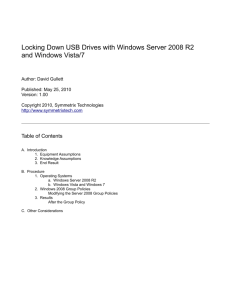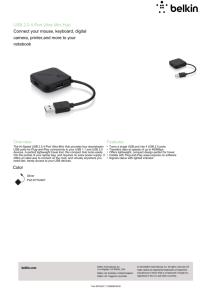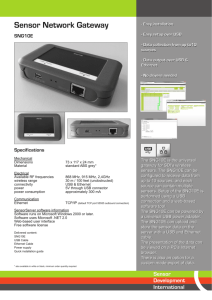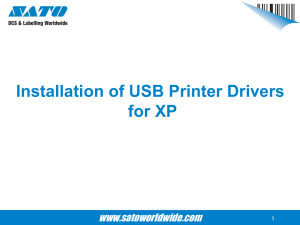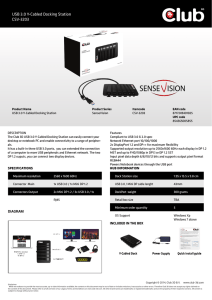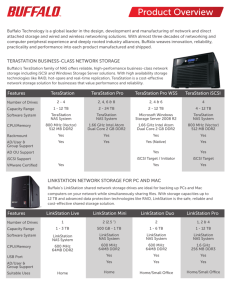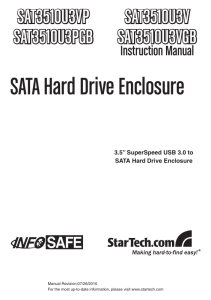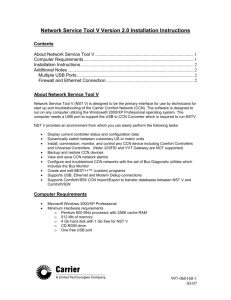Locking Down USB Drives with Windows Server 2012 R2 and
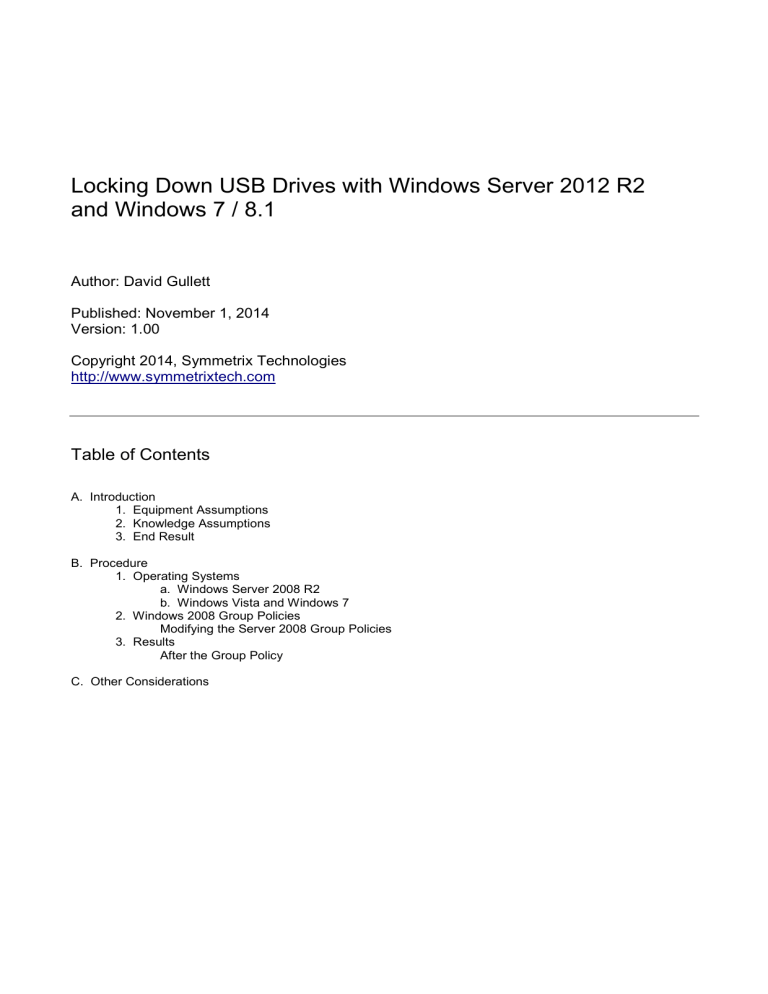
Locking Down USB Drives with Windows Server 2012 R2 and Windows 7 / 8.1
Author: David Gullett
Published: November 1, 2014
Version: 1.00
Copyright 2014, Symmetrix Technologies http://www.symmetrixtech.com
Table of Contents
A. Introduction
1. Equipment Assumptions
2. Knowledge Assumptions
3. End Result
B. Procedure
1. Operating Systems a. Windows Server 2008 R2 b. Windows Vista and Windows 7
2. Windows 2008 Group Policies
Modifying the Server 2008 Group Policies
3. Results
After the Group Policy
C. Other Considerations
A. Introduction
It's certainly no surprise with the proliferation of portable devices such as USB flash drives, USB hard drives, mobile phones and even cameras that extra care must now be taken to prevent data theft.
With the prevalence of point of sale (POS) attacks it is more important than ever to prevent random devices to be plugged into your equipment and causing massive financial casualties. All it takes is a small USB key for you to have significant data loss and liabilities. Much of the risk of the recent high-profile point of sale (POS) attacks could have been been reduced with a simple step such as this.
1. Equipment Assumptions
A Windows 2012 R2 domain with group policies enabled.
Client workstations running Windows Vista, Windows 7 or Windows 8.1. This will not work with Windows XP.
2. Knowledge Assumptions
Basic Windows server management skills including group policies – this document outlines exact steps to prevent USB drives from being connected to workstations but you need to have a full understanding of group policies and your forest/domain structure as there can easily be adverse effects in complex environments.
You've been warned!
3. End Result
The purpose of this document is to provide a method of preventing users in a Windows Server 2012 R2 and
Windows Vista/7/8.1 corporate environment from plugging in a removable USB device into a workstation and copying data to it or installing virus/trojan software.
Even while testing this the procedures in this document the results weren't always consistent so it's really important that you test the method in your environment. At the very least it will give you a good starting place.
As always, feedback is highly appreciated and we would like to update this document with your experiences.
B. Procedure
1. Operating Systems
We tested with the operating systems outlined below. If you're reading this you will likely be able to install these on your own.
Windows Server 2012 R2 - This document was tested with Windows Server 2012 R2 installed as a domain controller. Earlier versions may work similarly but because of time considerations we just used the newest release.
Windows Vista, Windows 7 and Windows 8.1 - We used only Windows Vista, Windows 7 and Windows 8.1 on the client machines for testing for reasons that you'll see in the screenshots below.
2. Windows 2012 R2 Group Policies
The first step is to modify the domain's group policies. Log on to a domain controller as a domain administrator equivalent account. Click on the Windows icon in the lower left corner and the Server Manager. Once the
Manager is open, click on Tools on the upper right hand side and then Group Policy Management.
Drill down through the group policy management pane until you reach the Default Domain Policy. Right-click on it and select Edit.
Drill down through the policy settings on the left to Computer Configuration/Policies/Administrative
Templates/System/Device Installation/Device Installation Restrictions. In the right pane double click on the
“Prevent Installation of Removable Devices” line.
In the next box, click the Enabled radio button and click OK.
As you can see in the image below, this modification will only work with Windows Vista or newer. If you're still running legacy XP PCs there are third party utilities that will enable you to do this.
3. Results
a. Windows 7
Once the policy takes effect you will get an “Device installation was prevented by policy” error in Windows 7 when a USB drive is inserted into the target machine (shown below).
When you click on the balloon error you get get a standard dialog box also reading “Device installation was prevented by policy” in the center of the screen. b. Windows 8.1
Windows 8.1 behaves slightly differently. The drivers will silently to fail to install but if you go to device manager you can see the non-installed device:
If you right-click on Mass Storage in Device Manager and select Update Driver Software, it will locate the driver and refuse to install the software so the USB is blocked:
C. Other Considerations
As with any document relating to security, don't take this guide as absolute gospel. You need to perform thorough testing in your environment.
We also highly recommend reviewing Microsoft's documentation regarding group policies. Pay particular attention to controlling the policy scope through linking to organizational units.
Another excellent tool provided by Microsoft is the Group Policy Results Wizard (this used to be called the
Resultant Set of Policy, or “RSoP” tool in earlier versions of Windows). It generates reports that show you exactly how policies are applied to specific users or computers. This is located in the Group Policy Management tool.
-------
Comments, feedback and contributions are welcome and encouraged at articles@symmetrixtech.com
.
Visit us on the web at http://www.symmetrixtech.com
for the latest news on Snort Report and to download the newest version.
Revision History:
2014-11-01 – 1.0 - Initial release
